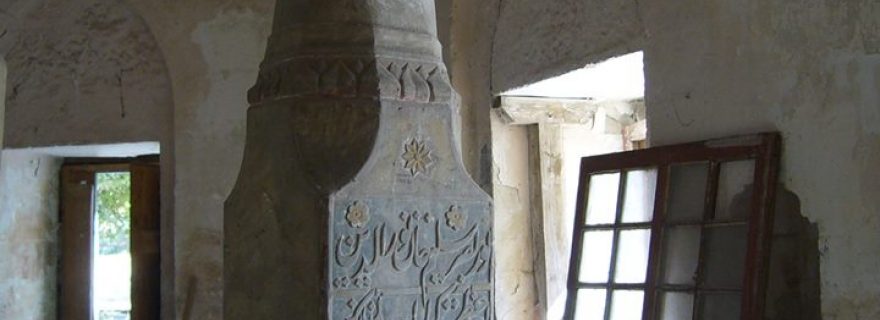Muslims in Crimea and the challenges of cultural legacy
Since early 2014 Crimea, the small peninsula below Russia and Ukraine, has become the focus of international attention. However, little is known about Crimea's rich cultural legacy, particularly with regard to the Islamic heritage of the Crimean Tatars.
Due to political circumstances in Ukraine, Crimea has become a place of high international interest. It turns out that despite the richness of Crimean history, we know little about local cultural legacy, especially in regard of the Crimean Tatars – the Turkic-speaking Muslim population of the peninsula. The Islamic heritage of Crimea is associated in the first place with the epoch of the Golden Horde in the 13th and 14th centuries, when Islam became a visible factor of social life in Crimea. The Crimean Khanate established itself as heir of the Golden Horde in the 15th century and very soon came under strong influence of the neighboring Ottoman Empire.
Endless war conflicts between the Ottomans and Russians over the territories in Crimea and the Balkans not only lead to the annexation of the Crimean Khanate by the Russian Empire in 1783, but also to the mass migration of Muslims from the peninsula to the Ottoman lands and the destruction of local cultural heritage. For example, in 1736 the Russian army set fire in the palace of Bakhchisaray, the capital of the Crimean Khanate, destroying the archive of local rulers and their libraries. However, under the Russian Imperial rule the local literary production and intellectual life did not stop: it manifested itself in a compilation of Sufi poetry, lexicographical and legal works. Many Crimean Tatars continued their work in emigration. The titanic figure of Isma‘il Gasprinskii (1851-1914) is deservedly regarded today as a peak of local intellectual development that affected the life of Muslims all over the Russian Empire in the early 20th century.
Deportation of Crimean Tatars from the peninsula to Central Asia in 1944 was a great disaster for thousands of human lives as well as for Crimea’s historical legacy. Nobody can calculate the damage caused to people’s memories by this forced migration. Historians could hardly expect that families, given an hour or so to collect their belongings, cared much for bringing their precious archives with them. During the Soviet times the study of Islamic history of Crimea was under embargo. In fact, the only study that paid serious attention to the Crimean historical legacy of the 14th-16th centuries was a path-breaking monograph (1979) of Mirkasyim Gosmanov, a Tatar historian from Kazan’ who deeply analyzed a series of documental sources discovered during his trips to Crimea.
The situation changed when the Crimean Tatars started to come back in the late 1980s. Not only Crimean Tatars, but also specialists from Turkey, Russia and Ukraine helped to restore the glorious past of local Muslims. The State Hermitage in St Petersburg organized a regular archaeological expedition to Crimea under the direction of Mark Kramarovsky, who has recently published the results of his decades-long research of Crimean urban culture. The first monographic study of the Crimean historiographical tradition of the 15th-19th centuries belongs to the pen of Il’ia Zaitsev from the Moscow Institute of Oriental Studies. Local historian Oleksa Gaivoronskii authored a fine popular book on biographies of Crimean Khans.
Turkish foundations were generous enough to support the restoration of Crimean cultural heritage and archaeological investigations in the city of Bakhchisaray. This enabled local specialists to conduct a highly professional restoration of the Zindjirli madrasa built near Bakhchisaray in 1500 and a shrine of Khan Hajji Giray (1397-1466). Moreover, recent research uncovered several dozens of Islamic manuscripts that originate from the library of Crimean Khans. This precious collection is of course of great importance as evidence of the elite’s literary tastes, development of local genres and international intellectual ties. Recent archeological investigations in Crimea brought to light hundreds of tombstones with Arabic-script texts. Next to the still-alive epigraphic monuments from the Khan cemetery and other places, these materials open up doors to the social history of Crimea over the last centuries.
Dialogue and integration are probably the key words of Crimean history. Not only the local population has always been a mixture of many nationalities, the entire peninsula appears in history as a meeting point for international communication and interaction that involves Europe, Turkey and Russia with its large Muslim population.
Whatever political situation is, the heritage of Crimean Muslims must be preserved and returned - metaphorically and literally - to its cultural heirs. Crimea as a crossroad of several empires conceals a great deal of historical experience of dialogue, compromises and agreement. Much of this experience is drastically needed today.



1 Comment
writing fiction based on truth is a very tough call and as you warn... inatropmt not to distort facts to suit the story demands of fiction. How wonderful to have the book translated into the very language whose need it serves. Wonderful! And hope you enjoyed the Palace as much as I did. The quietness is what impressed me most. Odd that my blog was about another occupation of the same territory. Its terrible when people are deprived of their own language. i've seen the results of this in Southern Africa.